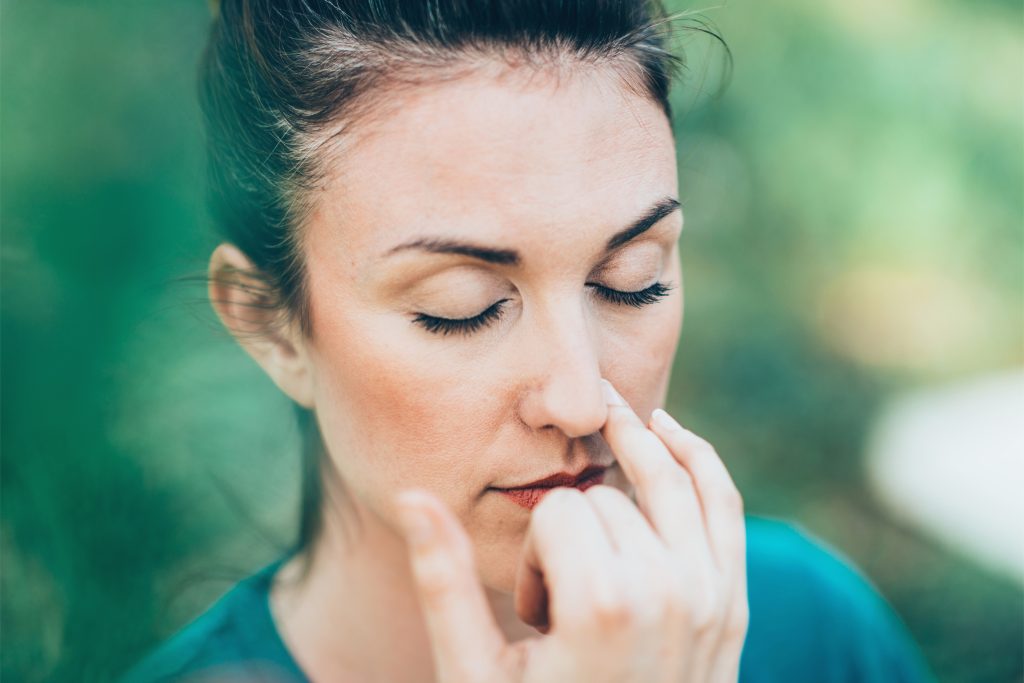
Anxiety is a growing challenge in today’s fast-paced world. Whether it’s work stress, social pressures, or digital overload, our minds often remain in a constant state of overdrive. But did you know that the way you breathe can directly impact your anxiety levels?
Yoga offers a powerful, natural remedy: Pranayama (yogic breathwork). Backed by science and rooted in ancient wisdom, pranayama techniques can help regulate the nervous system, lower stress hormones, and bring the mind into a state of calm.
In this blog, we’ll explore the best pranayama techniques for anxiety relief, how breathwork affects the brain, and how you can integrate it into your daily routine.
What Is Pranayama?
Pranayama is the art of controlled breathing. In Sanskrit, “Prana” means life force, and “Ayama” means expansion or regulation. When practiced regularly, pranayama can:
- Reduce cortisol (the stress hormone)
- Lower heart rate and blood pressure
- Improve oxygen flow to the brain
- Activate the parasympathetic nervous system (rest-and-digest mode)
How Does Pranayama Help with Anxiety?
When you feel anxious, your breathing becomes shallow and rapid, signaling the brain that you are in danger. This keeps your body in fight-or-flight mode, leading to increased heart rate, sweating, and mental fog.
Pranayama reverses this response by slowing down and deepening the breath, which tells the brain that you are safe. As a result:
- Stress levels decrease
- Brain function improves
- Emotional stability is restored
Best Pranayama Techniques for Anxiety Relief
1. Diaphragmatic Breathing (Belly Breathing)
This simple yet effective technique focuses on deep belly breaths instead of shallow chest breathing.
How to Practice:
- Sit or lie down in a comfortable position.
- Place one hand on your belly and the other on your chest.
- Inhale deeply through your nose, letting your belly expand.
- Exhale slowly through your mouth, feeling your belly contract.
- Repeat for 5-10 minutes.
Benefits:
- Slows heart rate
- Reduces muscle tension
- Instantly calms the nervous system
2. Nadi Shodhana (Alternate Nostril Breathing)
This technique balances the left and right hemispheres of the brain, promoting mental clarity and relaxation.
How to Practice:
- Sit comfortably and close your right nostril with your thumb.
- Inhale deeply through the left nostril.
- Close the left nostril with your ring finger and release the right nostril.
- Exhale through the right nostril.
- Inhale through the right nostril, then switch and exhale through the left.
- Repeat for 5 minutes.
Benefits:
- Balances energy levels
- Reduces mental chatter
- Enhances focus and relaxation
3. Bhramari (Humming Bee Breath)
This technique uses vibration to stimulate the vagus nerve, which helps regulate emotions and reduce stress.
How to Practice:
- Sit comfortably and close your eyes.
- Inhale deeply through your nose.
- As you exhale, make a gentle humming sound like a bee.
- Feel the vibrations in your throat and head.
- Repeat for 5-7 minutes.
Benefits:
- Quickly calms anxiety
- Lowers blood pressure
- Improves sleep quality
4. 4-7-8 Breathing Technique
This method is great for stopping panic attacks and promoting instant relaxation.
How to Practice:
- Inhale deeply for 4 seconds.
- Hold your breath for 7 seconds.
- Exhale slowly for 8 seconds.
- Repeat for 5 minutes.
Benefits:
- Reduces stress instantly
- Slows down racing thoughts
- Improves sleep
Scientific Benefits of Pranayama for Anxiety
Modern research supports the effectiveness of pranayama in reducing anxiety and stress. Some key studies include:
- Harvard Medical School found that controlled breathing lowers blood pressure and stress hormones.
- A study in Frontiers in Psychology showed that pranayama increases GABA levels, a neurotransmitter that promotes relaxation.
- Stanford University researchers discovered that slow breathing stimulates the vagus nerve, which helps regulate emotions and panic attacks.
How Long Should You Practice Pranayama for Anxiety?
Consistency is key! Even 5-10 minutes of breathwork daily can significantly improve mental well-being. Here’s a simple routine:
- Morning: 5 minutes of Belly Breathing to start the day calmly.
- Afternoon: 5 minutes of Alternate Nostril Breathing to balance energy.
- Evening: 5 minutes of Humming Breath to wind down before sleep.
Can Pranayama Stop a Panic Attack?
Yes! When experiencing a panic attack, breathing becomes fast and erratic, leading to dizziness and tightness in the chest. Pranayama techniques like Box Breathing (4-4-4-4 Method) can help regain control:
- Inhale for 4 seconds
- Hold for 4 seconds
- Exhale for 4 seconds
- Hold for 4 seconds
This technique regulates breathing, calms the mind, and prevents hyperventilation.
Breathwork for Sleep and Anxiety
If anxiety disrupts your sleep, try these pranayama techniques before bed:
- 4-7-8 Breathing – Slows brain activity and prepares the body for rest.
- Bhramari (Humming Breath) – Soothes the nervous system.
- Diaphragmatic Breathing – Relaxes tense muscles and promotes deep sleep.

One Response